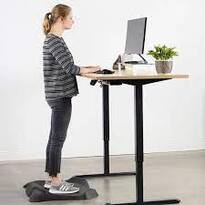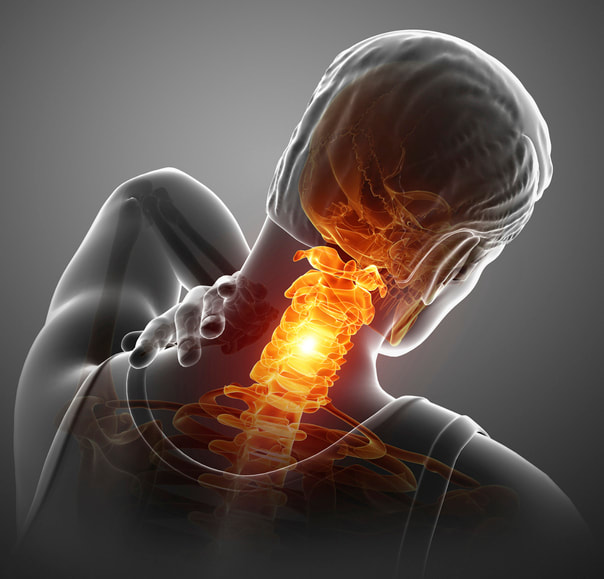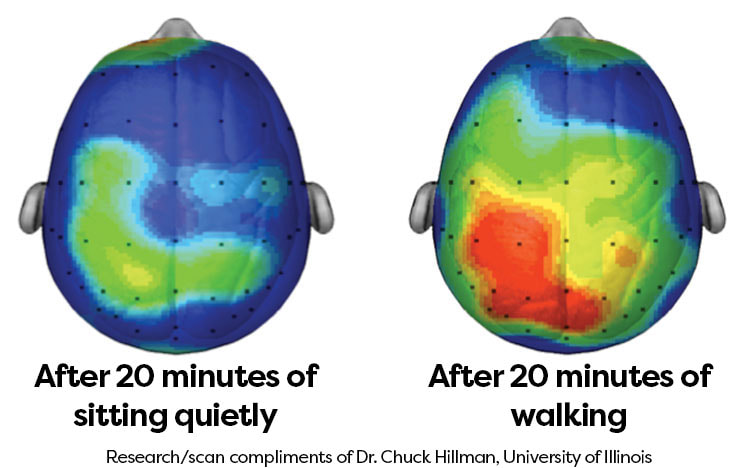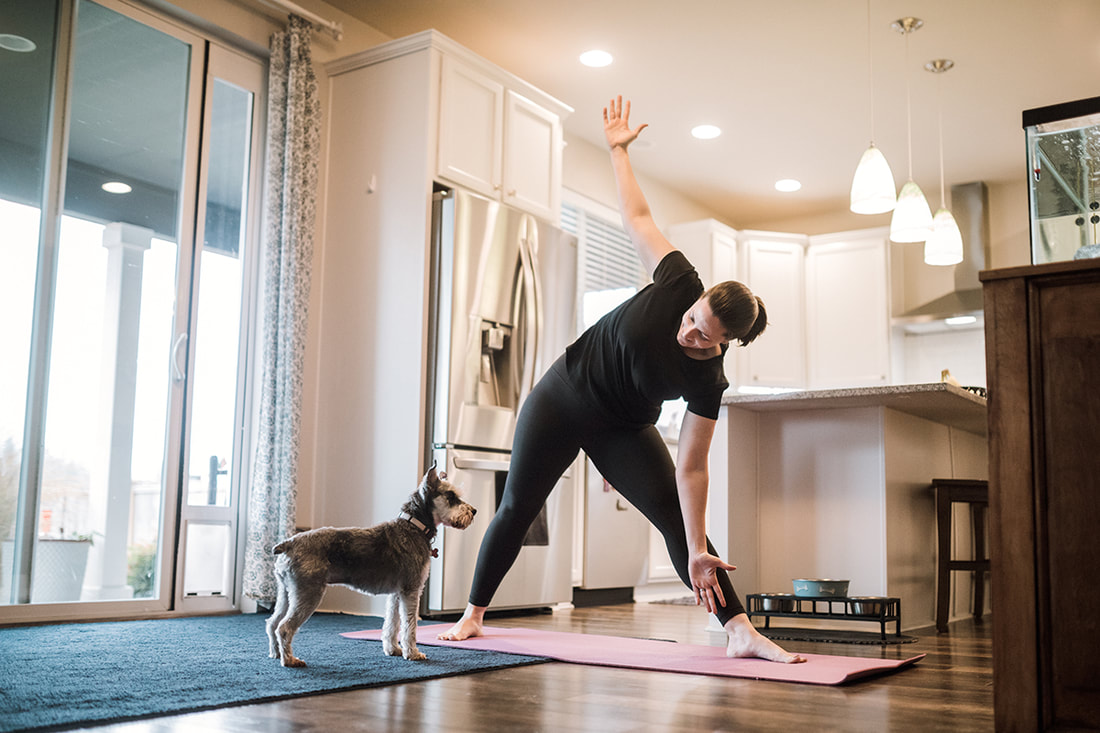|
By: Mike Staszak, PT Fasting and intermittent fasting (IF) have been around for a long time for weight loss and have been shown to aid in lowering blood pressure, cholesterol, and improvement in blood glucose and insulin levels. Studies in humans, almost across the board, have shown that IF is safe and incredibly effective. However, many people find it difficult to fast. A growing body of research suggests that the timing of the fast is key, and can make IF a more realistic, sustainable, and effective approach for weight loss, as well as a number of other health-related benefits. Extensive research has been done on animals so far with a more limited amount of human trials, but all of the resulting information points to definite health benefits. Human trials show definitive weight loss, with a loss of body fat, but no loss of lean body mass. Preliminary studies show a reduction of inflammatory markers, leading to a general decrease in inflammation and a reduction in digestive inflammation, equating to improved digestive health and a stronger immune system. It has also been shown to help with reduced fatigue, improved focus, increased stress resistance, type 2 diabetes, and potentially with autoimmune disorders and even preventing cancer. So how do we make something that seems so extreme work in our lives?
There are several different types of fasting protocols, from long-duration fasts, fasting for 24 hours every other day to reducing the hours of eating on a daily basis. I recommend a type of IF called time-restricted eating. This involves basically increasing your nightly fasting period, eliminating nighttime snacks, and eating your dinner earlier. Eating dinner by 5:00 p.m. will make it easy to go 12-14 hours without eating. Another positive aspect of this that recent research has revealed is that if you do this five days per week there is no reduction in the positive benefits, allowing us to have two days per week that we can shorten the fasting period. Additionally, animal research shows another potential positive effect of IF is living longer. Mice that have gone through time-restricted eating protocols have lived 15% longer, but we have not yet done human trials long enough to quantify these types of results for us. The preliminary research, however, is encouraging. The health benefits of the time-restricted eating are unmistakable if you can make it work in your life. One of the big concerns of a lot of people is being hungry, but once you start, it will only take a couple of days before you will not have those hunger cravings later in the evening. Remember, even when committing to an eating program like this you still need to make healthy food choices. Oh yeah, and don’t forget about adequate hydration. Drinking lots of water is imperative to a healthy lifestyle and while intermittent fasting. About Mike Staszak Michael Staszak has been an outpatient orthopedic physical therapist for the past 27 years. He is the owner of Staszak Physical Therapy & Wellness Center in Eugene. He and his staff believe that the more people understand about how their bodies work and learn proper body mechanics, the less likely they are to become injured again. With this commitment to patient education, Michael provides wellness articles and presentations for businesses and community members. He also has a passion for nutrition and how it affects our physical health. Image from CHSbuffalo.org
0 Comments
By: Mike Staszak It seems like there is always a new diet trending that claims to be the best, whether it be vegetarian or vegan, keto, paleo, and whole foods. The bottom line is there is no one diet or formula that works for everyone. The diet that works best for me simply will not work the same for very many other people. Not only that, as our bodies change over the years often or dietary needs adjust as well. So, once we think we have it all figured out, we need to make further adjustments. One of the big questions for a lot of people is should I eat meat or should I be on the vegetarian side? As I stated above, this varies between individuals, some people’s bodies do extremely well with healthy meats incorporated into their diet, other people’s bodies respond better with primarily a plant-based diet. Problems start to arise when somebody’s body does better when consuming meat products regularly and they have other philosophical reasons for their dietary choices and vice versa for non-meat eaters. Here are some key tips for a healthier diet:
There is no perfect diet. When it comes down to it, everyone has different eating habits that work best for them. Eating what feels best for your body is important and will help you maintain a healthy and balanced life. About Mike Staszak Michael Staszak has been an outpatient orthopedic physical therapist for the past 27 years. He is the owner of Staszak Physical Therapy & Wellness Center in Eugene. He and his staff believe that the more people who understand how their bodies work and learn proper body mechanics, the less likely they are to become injured again. With this commitment to patient education, Michael provides wellness articles and presentations for businesses and community members. By: Michael Staszak, PT Over the past decade, an increasing percentage of people have transitioned into more sedentary work situations, sitting for up to 40 or 50 hours per week either at a desk or in front of a computer. With the pandemic forcing many people to move from the workplace to work from home, in addition to several social restrictions, this has caused the fastest transformation and decrease in activity level in history. It is critical to make movement throughout the day a priority to avoid the many health risks that come from sitting for too long. Sitting for long periods of time is bad for our bodies as we are designed to move on a regular basis throughout the day. Research shows that people who sit for long periods of time are linked to a higher rate of developing heart disease, having a stroke, getting diabetes, and having high blood pressure. Sitting also can cause neck and back pain which can lead to long-term degenerative joint disease. It is important to get yourself moving as much as possible outside of a long workday to ensure you do not develop any health problems related to sitting too long. Some easy examples of this include a short active stretching routine first thing in the morning, getting away from your desk several times throughout the workday, and a walk on your lunch break. More examples include an exercise class after work in the evening and an after-work walk with your friends, partner, or dog. The key is to get into the routine of moving consistently throughout your workday as relying on only moving on the weekend is not enough. The days are longer and the weather is nicer, so this is the perfect time of year to start moving more to develop lasting healthy habits. The more you move and exercise the better you will feel, the more energy you will have, and the healthier you will become.
About the Author: Michael Staszak has been an outpatient orthopedic physical therapist for the past 27 years and is the owner of Staszak Physical Therapy & Wellness Center in Eugene. He and his staff believe that the more people understand how their bodies work and learn proper body mechanics, the less likely they are to become injured again. With this commitment to patient education, Michael provides wellness articles and presentations for businesses and community members. Photos from istockphoto.com https://www.health.harvard.edu/heart-health/dont-just-sit-there-move-more#:~:text=In%20recent%20years%2C%20research%20has,linked%20to%20heart%20disease%20risk.  By Michael Staszak, PT Working long hours in the office can wreak havoc on your body if you don’t maintain good posture. Everyone has heard this and as a result, several ergonomic ‘solutions’ have been marketed to help alleviate back and body aches. Everything from yoga balls, kneeling chairs, standing desks, and more have been touted as the better options from sitting all day. But, are these alternatives really better for you? Let’s take a look at two of the most popular ergonomic options people consider — standing desks vs. traditional office chairs. Before we begin to address which option is better, it is important to understand what the correct posture looks like in both scenarios. Sitting Sitting for long periods becomes especially bad for your back and spine when done incorrectly. For example, sitting in a perched position where you are forward on your seat with your back hyperextended, or with your body slumped forward such that the natural curves are no longer present and your neck is stretched forward are both common and incorrect sitting postures. When your back is rounder (slumped), for example, you are placing three to four times more pressure on your spinal discs which can lead to long-term disc degeneration, muscle tightness, and compression in your neck. The Correct Way to Sit The ‘how to’ for sitting may seem fundamental however plenty of people sit incorrectly every day. To sit correctly means your back is straight with your shoulders back, your buttocks touching the back of the chair, and all three normal back cures should be present. Body weight should be distributed evenly on both hips, and your knees should be bent and even with the height of your hips. Standing Standing for long periods can be equally problematic as sitting, but in different ways. Most people have a weak core and lack the physical endurance needed to keep any one standing position for a length of time. As a result, shifts are made in how you stand resulting in compression on your feet and other joints, hyperextension of the lower back and legs, and misaligned hips or spine. The Correct Way to Stand Proper standing posture is not just standing upright. In fact, there is a bit more to it which might surprise you. Standing properly includes the following steps: bearing your weight evenly distributed on the front and back of your feet, keeping your knees slightly bent and feet shoulder-width apart, letting your arms hang down naturally on the sides of your body, standing straight and tall with your shoulders pulled backward, and keeping your abdominals gently engaged. To correctly sit or stand requires having adequate core strength and endurance, however most people have a weak core and lack the physical endurance needed to keep any one position for a length of time. As a result, compensations are used to make sitting or standing seem more comfortable, such as extending your legs and placing your feet up on a stool or coffee table, or putting more weight on one leg than the other when standing. If both sitting and standing can cause issues for your body, which is the better choice? Despite fairly effective marketing campaigns, sitting is the better option. Key to this choice, however, is that you are sitting in an ergonomically designed chair rated for the typical number of hours you sit during your workday. The primary reason sitting is the better choice is that the vast majority of people do not have the necessary core strength or the ability to maintain the proper standing posture for hours on end. And, no, a ball chair is not better as this requires even more core strength and stability from your body. Eventually, your body gets fatigued and your posture changes. A well designed chair provides your body support, even when you are feeling tired. But if your workplace has the means to provide an even better solution, it would be for you to have a workstation that can adjust in height from a sitting to a standing position. The variation in height provides your body the right mix of positions to minimize the negative impacts of sitting or standing too long. Engage both standing and sitting positions throughout your workday and your body will thank you. About the Author: Michael Staszak has been an outpatient orthopedic physical therapist for the past 27 years and is the owner of Staszak Physical Therapy & Wellness Center in Eugene. He and his staff believe that the more people understand how their bodies work and learn proper body mechanics, the less likely they are to become injured again. With this commitment to patient education, Michael provides wellness articles and presentations for businesses and community members. Photos from istockphoto.com Emily relocated to Eugene in 2013 from Minnesota to pursue her Physical Therapist Assistant degree at Lane Community College. She is currently working towards a specialization in Pelvic Health and looks forward to future opportunities to continue to learn and grow with the great team here at Staszak Physical Therapy and Wellness Center.
She is passionate about helping others, providing a hands-on approach to her treatment, as well as finding creative solutions to help patients meet their goals. Prior to becoming a PTA Emily has worked in healthcare as a CNA and Home Health Provider for approximately 10 years in a variety of settings. She has built off the knowledge and experience she gained with patient care to provide a welcoming and open space for patients to improve their health and continue to pursue their passions. In her free time, she enjoys traveling, exploring the PNW especially camping, backpacking, and hiking. At least once a year she tries to head back to Minnesota to see her friends, family, and bake some cookies with her Grandma. She also enjoys gardening, pickling, canning and spending time outdoors with her husband and 2 cats. After a 20+ year career in the restaurant industry Shane left his chef knives behind to pursue a career in the Fitness/Healthcare industry. Shane has a passion for kinesiology and wants to share that knowledge with the people he works with, so they are more connected to their body and in control of their overall health. And it’s a heck of a workout too! Shane trains through modalities such as functional mobility, strength and mobility and traditional strength training through internal and external loading techniques. He looks forward to helping people achieve their own personal command of movement. Shane is certified through NASM as a CPT (Certified Personal Trainer) and as a CNC (Certified Nutrition Counselor). And as a FRCMs (Functional Range & Conditioning Mobility Specialist) and an FRAs (Functional Range Assessment Specialist)
 My massage therapy background has been anchored in functional wellness clinics from the start in the year 2000. My technique, referred to as “CPR for the muscles,” is intuitive, informed and pulsatory, with a firm contact. Working with the fascia, releasing myofascial trigger points and following through with active isolated stretching and traction will dilate constricted blood vessels, release muscular adhesions, and soften scar tissue. Working with the energy body, connecting to breath, and grounding and centering will help with feeling centered, supported and liberated. I am also skilled in using a variety of bodywork tools, such as cups, percussive massagers and guasha tools. Creating treatment plans with physical therapists, personal trainers, chiropractors, acupuncturists and a variety of other therapists has taught me to focus and gain results quickly. My specialties include: sports massage, deep tissue massage, trigger point release, fascial release, active isolated stretching, bio-energetics, chakra healing, and I am a Reiki Master. Most people seeking physical therapy intervention need to build motor control, muscular strength, or muscular endurance to alleviate their pain and help them do the things they want to do. Most likely, they need to build some combination of the three. It is important, however, to build motor control before increasing exercise intensity so that the muscles are trained correctly. Motor control is the ability to recruit the right muscles at the right time to carry out a specific movement. Good motor control is sometimes referred to as "muscle memory." For example, playing a song on guitar requires motor control to play the right chords and coordinate the fret hand with the strumming hand. As practice continues, the player learns to move the fingers without moving the whole arm so the movement becomes faster and more efficient. Eventually, if practice continues, the player will be able to play chords even without looking at their fingers. That's motor control, baby! Practice it enough times and the body knows what to do. The brain-to-muscle interaction can be imagined like this: The first time through a new movement many muscles are recruited even when they aren't needed. As the body learns what is expected, it becomes more efficient at recruiting only the necessary muscles to move, making the movement faster and more energy efficient. Now take someone with a forward head position and chronic neck pain exacerbated with picking up objects from the floor (groceries, their wiggly pug, their 20 lb. grandchild). This movement also requires motor control. The right muscles must be recruited at the right time to stabilize the neck on top of the shoulders and make the movement happen! When picking up that heavy object/precious child, the neck needs to be stabilized FIRST and then the big, powerful glutes and quads can do the lifting instead of the smaller back muscles and instead of adding torque to the neck. Neck stabilization can be practiced over and over doing really simple exercises, even while lying down, to build motor control to the neck stabilizers before any actual weight needs to be added to the training. Motor control is practiced in many different ways, but the key is simple, consistent practice until the movement comes naturally. Once the motor pattern is established, the movements can become more complex and resistance added to increase strength.
Consistency is key when it comes to control. Short, frequent practice sessions are important; practice 5 min/day 5 days/week is better than one 25 minute practice session per week. That's because the body learns a little during each session and there should be carry-over from day-to-day; the exercise becomes easier to execute and requires less concentration. Less thought is required as the "muscle memory" develops and strengthens. Motor control is the base on which strength and endurance are built for safe and effective body movement. Tips for reducing back pain when working from home: Work station ergonomics You may have had an ergonomic assessment on your desk at work, but maybe haven't had such focus on you work station at home. Check out the picture below for areas to adjust. When sitting you back should be fully supported by your chair (that includes your upper pelvis) and your feet fully supported on the floor. Knees should be at hip level or just below. Arm rests are important for taking stress off your neck and upper shoulders so you don’t end up shrugging for 6+ hours while typing. The top of the monitor should be level with your eyes and about an arm’s length away from your face to limit eye strain and allow neutral neck position. Change positions often Your body is made to move. Change positions from sitting to standing, if possible, and take movement breaks - walking, stretching, arm circles, head turns - anything to get yourself out of “computer posture” for a few minutes. Aim for a movement break every 30 minutes even if it’s just to do some shoulder blade squeezes and getting your eyes off the computer screen for 20 seconds. Make exercise a priority
Pick anything you like to do; yoga, walking, running, basketball, etc. Movement is important for many physical health benefits including lowering blood pressure, lowering cholesterol, and blood sugar regulation. Regular exercise is associated with decreased risk for illnesses such as heart disease, stroke, and many cancers. Exercise has also been shown to decrease anxiety and depression and release endorphins, the “feel-good hormone." Most of us are spending significantly more time at home these days. In my personal experience, the initial abrupt change in daily life equated to me sitting for way too long of periods on a poor ergonomic yet very cozy couch. I was using the extra time to do cool stuff like read, take online harmonica lessons, and practice Spanish on Duolingo, but it didn’t take long to start feeling it in my back. It only took two days of this to aggravate an old back injury that causes burning pain to go down my leg. I quickly realized I needed to take my own advice that I give all the time as a physical therapist - keep moving!
We would all benefit from incorporating more movement throughout our day in both structured and unstructured ways. It’s not only vital for physical health, but also for mental and emotional health which is being tested a little more during this pandemic. There are an endless ways to fit in small little exercises with normal, daily tasks. I often suggest for patients to do heel and toe raises while brushing teeth, mini-squats while dicing vegetables, practice standing on one leg while washing the dishes, etc. Use the counter as a makeshift standing desk for computer work or reading to break up sitting time. My favorite way to include more movement is a good old fashion dance party. Put some tunes on and dance around the house! In addition to the unstructured exercise, try to set aside time everyday to go outside and walk. Walking is one of the best things you can do for your physical health. Plus the fresh air, birds chirping, and beautiful scenery make it all the better. Although we can’t physically be together, several places are offering virtual group exercise classes including our very own Evolve Fitness Studios. Join your beloved trainers for pilates, yoga, and strength training. Virtual classes give us a sense of community that is very much needed right now. To sum it all up - move, move, move! Stay active and stay healthy. Jill Grider, DPT, OCS Board Certified Orthopedic Clinical Specialist Staszak Physical Therapy & Wellness Center |
Our BlogRead here for more information about our practice, industry news, tips for taking care of your body, and great recipes for healthy living. Categories
All
|















 RSS Feed
RSS Feed